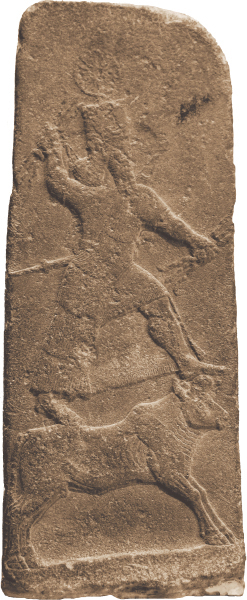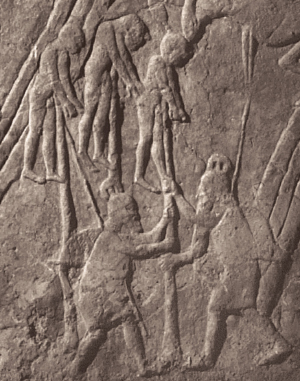Idolatry at Baal Peor (25:1–18)
Shittim (25:1). The geographical link to previous and later material is derived from the references to Shittim (Num. 33:49, i.e., “Abel Shittim”; Josh. 2:1; 3:1), Baal (Num. 22:41, “Bamoth Baal”), and Peor (Deut. 3:29). “Shittim” is an example of a floral toponym, derived from the word for “acacia tree,” which is prominent in these arid regions. Glueck identified Abel Shittim with Tell el-Khefrein, though Tell el-Hamman, a site located at the mouth of the Wadi Kefrein, has also been suggested.247 Josephus identified the site with Abila of his day, a site about three miles east of the Jordan and five miles north of the Dead Sea.248 This general area “on the plains of Moab by the Jordan across from Jericho” (Num. 26:63; 31:12; 33:48, 50; 36:13) is the geographical setting for the rest of Israel’s sojourn prior to entering the Promised Land.

Wadi es-Sir is roughly the area where Abel Shittim is to be found.
Todd Bolen/www.BiblePlaces.com
Baal of Peor (25:3). This is the first occurrence of the god Baal in the Hebrew Bible, who becomes the primary antagonist to Yahweh for the hearts of the Israelites. In the latter half of the Late Bronze Age, Baal was emerging as one of the major operative deities in Canaan. From Ugaritic texts Baal was the agent of the creative order, who with his consort Anath defeated the forces of evil, namely, Yammu (Sea), Mot (Death), and Lotan (Leviathan, “Sea Monster”).
Baal was a lesser-known deity in Mesopotamia during the Early Bronze Age and in the beginning of the Middle Bronze (patriarchal) period. Milgrom simply states that “the patriarchs did not know him.”249 His first appearance as a prominent deity in Canaan surfaces in Hyksos period texts from Egypt in the latter half of the Middle Bronze Age (ca. 1720–1570 B.C.). The Egyptians bemoaned the fact that the “foreign rulers” from the land of the Hurru and Retenu were not worshipers of Amon-Re, but of a god called Baal-hazor, which they associated with their god Seth.250 With the emergence of the classical Canaanites in the southern Levant, apparently a mix of Northwest Semitic peoples and some non-Semitic elements such as the Hurrians and Hittites, came the emergence of Baal as a primary deity in the cults of the land.251

The storm-god Adad stands on a bull, brandishing a flash of lightning. Basalt bas-relief on a stele is from Arslan-Tash, eighth century B.C.
Rama/Wikimedia Commons, courtesy of the Louvre
Kill them (25:4). The instructions given to Moses are severe but necessary to accomplish the purging of the sins of the people. Moses is charged literally to “take all the leaders of the people and impale them to Yahweh before the sun.” That is, Moses must round up all the tribal leaders, those representatives of the people who presumably should have either prevented the idolatrous activities or carried out the punishment of the guilty members of their tribes, and execute them by impaling them on poles so that their bodies hang out in broad daylight.252 The term “impale” is a rare Hebrew verb that has been variously translated as “kill, execute, impale, dismember.”253
Exposure to the elements usually followed this form of execution, as with Saul’s sons (2 Sam. 21:8–13). Such public exposure was reserved for only the most heinous of crimes in ancient Israel and Mesopotamia. Later Assyrian bas relief murals depict rebellious vassals impaled on poles and left for public viewing, presumably to deter further insurrection.254 That the guilty parties were to be executed as “unto Yahweh” means that they were rendered unto Yahweh in order to expiate the divine wrath as evidenced in the plague.

Stone relief from the palace of Sennacherib depicts the assault on the gate tower of Lachish and impalement of captives.
Werner Forman Archive/The British Museum